
Anthony Trollope was an English novelist and civil servant of the Victorian era. Among his best-known works is a series of novels collectively known as the Chronicles of Barsetshire, which revolves around the imaginary county of Barsetshire. He also wrote novels on political, social, and gender issues, and other topical matters.

Barchester Towers is a novel by English author Anthony Trollope published by Longmans in 1857. It is the second book in the Chronicles of Barsetshire series, preceded by The Warden and followed by Doctor Thorne. Among other things it satirises the antipathy in the Church of England between High Church and Evangelical adherents. Trollope began writing this book in 1855. He wrote constantly and made himself a writing-desk so he could continue writing while travelling by train. "Pray know that when a man begins writing a book he never gives over", he wrote in a letter during this period. "The evil with which he is beset is as inveterate as drinking – as exciting as gambling".
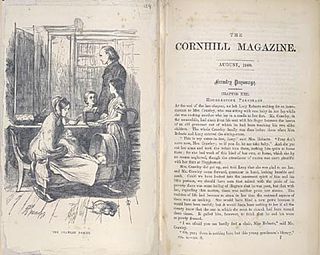
Framley Parsonage is a novel by English author Anthony Trollope. It was first published in serial form in the Cornhill Magazine in 1860, then in book form in April 1861. It is the fourth book in the Chronicles of Barsetshire series, preceded by Doctor Thorne and followed by The Small House at Allington.

A potion is a liquid "that contains medicine, poison, or something that is supposed to have magic powers." It derives from the Latin word potio which refers to a drink or the act of drinking. The term philtre is also used, often specifically for a love potion, a potion that is supposed to create feelings of love or attraction in the one who drinks it. Throughout history there have been several types of potions for a range of purposes. Reasons for taking potions ranged from curing an illness, to securing immortality to trying to induce love. These potions, while often ineffective or poisonous, occasionally had some degree of medicinal success depending on what they sought to fix and the type and amount of ingredients used. Some popular ingredients used in potions across history include Spanish fly, nightshade plants, cannabis, and opium.
A panacea, named after the Greek goddess of universal remedy Panacea, is any supposed remedy that is claimed to cure all diseases and prolong life indefinitely. It was in the past sought by alchemists in connection with the elixir of life and the philosopher's stone, a mythical substance that would enable the transmutation of common metals into gold. Through the 18th and 19th centuries, many "patent medicines" were claimed to be panaceas, and they became very big business. The term "panacea" is used in a negative way to describe the overuse of any one solution to solve many different problems, especially in medicine. The word has acquired connotations of snake oil and quackery.

Frances Milton Trollope, also known as Fanny Trollope, was an English novelist who wrote as Mrs. Trollope or Mrs. Frances Trollope. Her book, Domestic Manners of the Americans (1832), observations from a trip to the United States, is the best known.

Apothecary is an archaic English term for a medical professional who formulates and dispenses materia medica (medicine) to physicians, surgeons and patients. The modern terms 'pharmacist' and 'chemist' have taken over this role.
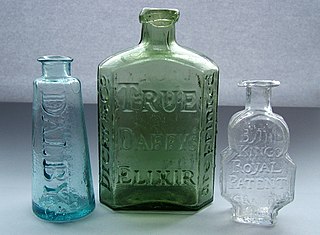
Dalby's Carminative was one of the two most widely used patent medicines given to babies and children at the end of the 18th and beginning of the 19th centuries. Together with its rival, Godfrey's Cordial, they were known as "mother's friends" and were used for everything from colic and coughs to typhoid.
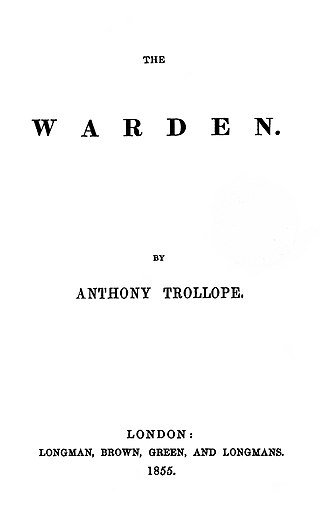
The Warden is a novel by English author Anthony Trollope published by Longman in 1855. It is the first book in the Chronicles of Barsetshire series, followed by Barchester Towers.
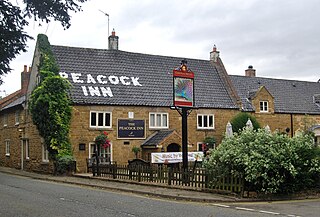
Redmile is an English village and civil parish in the Melton district of Leicestershire, about ten miles (16 km) north of Melton Mowbray and seven miles (11 km) west of Grantham. The population of the civil parish, which includes Barkestone-le-Vale and Plungar, was 921 at the 2011 census, up from 829 in 2001.
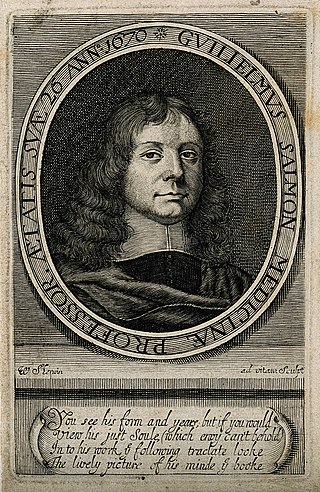
William Salmon (1644–1713) was an English empiric doctor and a writer of medical texts. He advertised himself as a "Professor of Physick". Salmon held an equivocal place in the medical community. He led apothecaries in opposing attempts by physicians to control the dispensing of medicines, and was derided by physicians as "the King of the Quacks". He has been described as "a brilliant publicist, but not much of a philosopher".
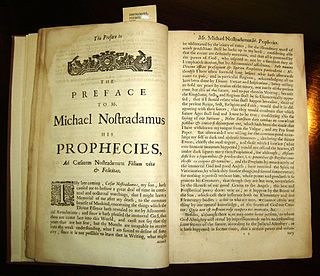
Theophilus de Garencières (1610–1680) was a French apothecary who spent most of his life practising in England.
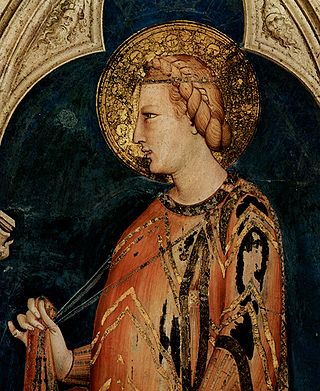
Hungary water was one of the first alcohol-based perfumes in Europe, primarily made with rosemary. The oldest surviving recipes call for distilling fresh rosemary and thyme with brandy, while later formulations contain wine, lavender, mint, sage, marjoram, costus, orange blossom and lemon.

The Claverings is a novel by Anthony Trollope, written in 1864 and published in 1866–67. It is the story of a young man starting out in life, who must find himself a profession and a wife; and of a young woman who makes a marriage of convenience and must accept the consequences of her decision.

The Vicar of Bullhampton is an 1870 novel by Anthony Trollope. It is made up of three intertwining subplots: the courtship of a young woman by two suitors; a feud between the titular Broad church vicar and a Low church nobleman, abetted by a Methodist minister; and the vicar's attempt to rehabilitate a young woman who has gone astray.
William Dicey was an English newspaper proprietor, publisher of street literature, printseller and patent medicine seller, in Northampton and later in London. He was also the co-founder and proprietor of the Northampton Mercury newspaper from its establishment in 1720 until his death in November 1756. He also built up a huge distribution network in England for patent medicines.
Cluer Dicey was an English newspaper proprietor, publisher of street literature, printseller and patent medicine seller, in London and later in Northampton. He was also proprietor of the Northampton Mercury newspaper from 1756 until his death in October 1775. Likewise he inherited and developed a huge distribution network in England for patent medicines.
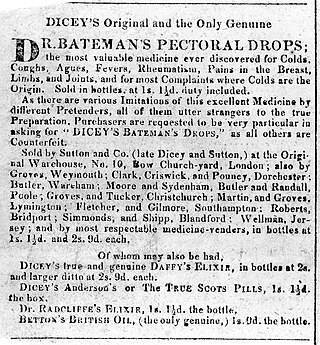
Dr Bateman's Pectoral Drops was a popular patent medicine for disorders of the chest or lungs during the 18th, 19th, and early 20th centuries in Britain and North America. It was later marketed as a remedy for ‘all Rheumatic and Chronic complaints, in pains of the limbs, bones, and joints, for influenza, and in violent colds,.

Rose v Royal College of Physicians, also known as The Rose Case, was a 1703 British landmark court case between the Royal College of Physicians (RCP) and William Rose, a Liveryman of the Society of Apothecaries. Rose had treated a John Seale, who complained about his treatment to the RCP, who brought a successful court action against Rose in 1703. The Society of Apothecaries and Rose successfully appealed against this judgement. However, this did not change medical practice but merely legitimised what apothecaries were doing already and confirmed the "status quo". It did, nevertheless, symbolize the decline in the College's growing legal monopoly over who practises medicine. The case was ultimately seen as not one between a College and one individual, but one between one powerful College against one powerful Society.

















